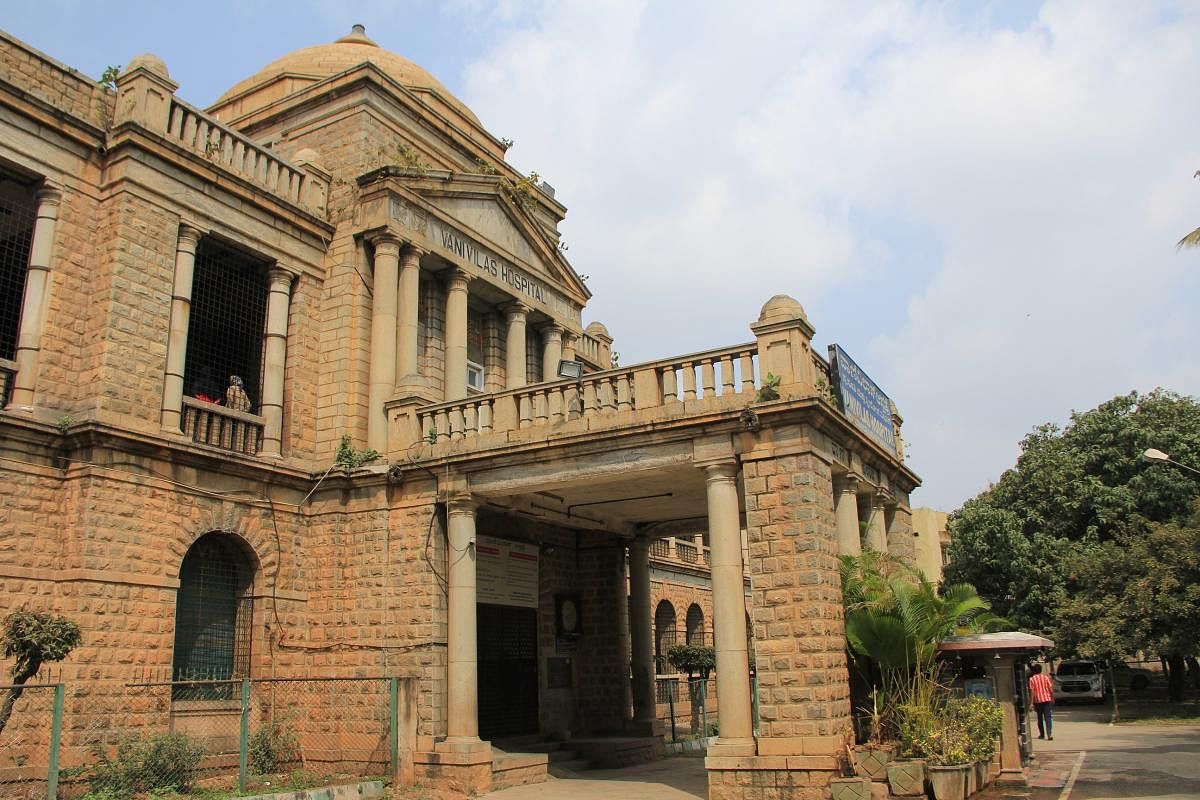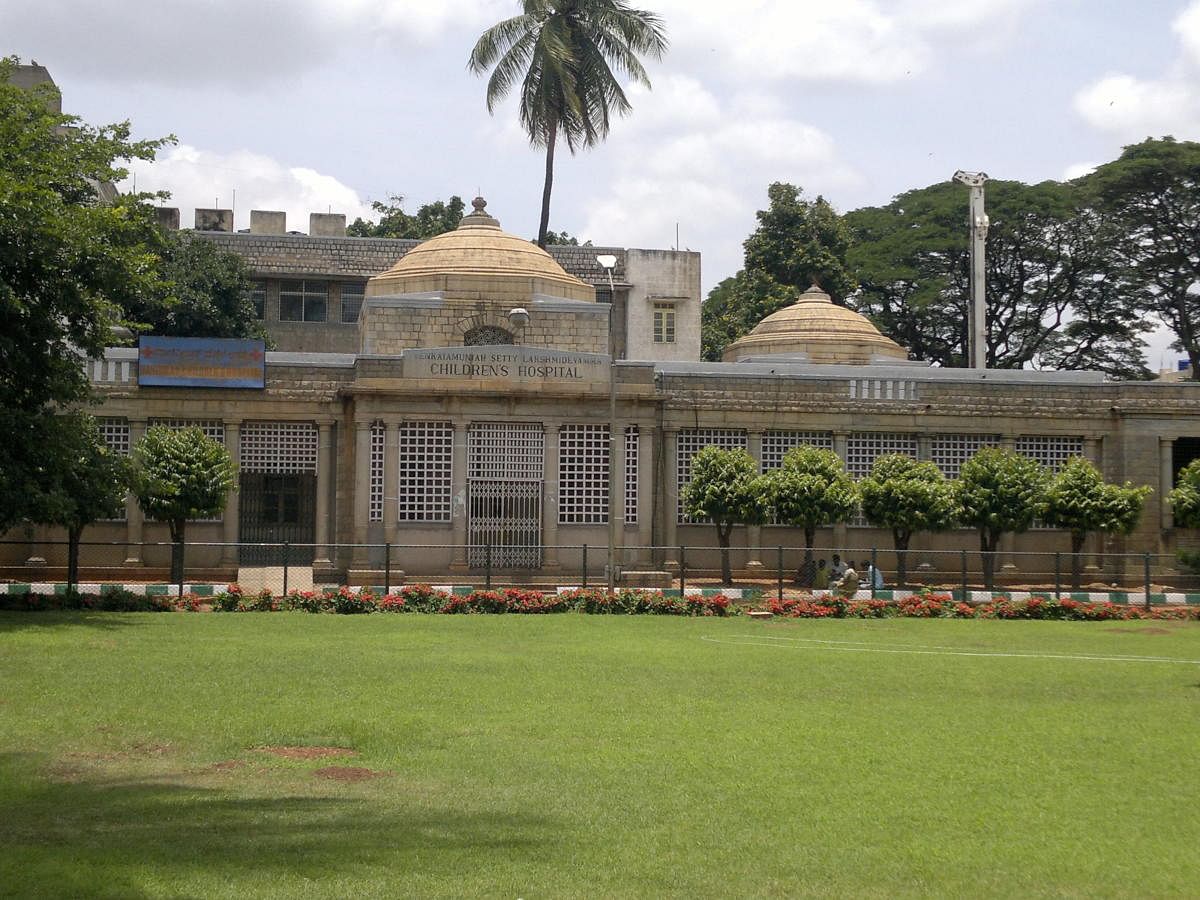

A city has many layers to its past. One way we see this is when we peek into the pasts of some of our prominent and important landmarks, like the Vani Vilas Hospital in Bengaluru, for instance.
Since the beginning of the pandemic last year, the staff here have helped more than 400 Covid-positive women safely deliver babies. Dial back to the early 1800s and the site where the hospital now stands housed a small chapel and an arsenal.
At that time, this area was within the once-mighty Bengaluru fort, of which only a small fraction still stands today. After Tipu Sultan was killed in 1799, the fort passed onto British hands. In the early 1800s, a so-called Drummer’s Chapel was built here to serve the small European community that then lived within the fort. As the European congregation in the fort dwindled, so did the church’s fortunes. It was sometimes unused, even occasionally serving as military stores.
A little to the south of the chapel was an arsenal, built by Tipu Sultan. In the late 1800s, after the fort came under the Mysore Maharaja's administration, this Lower Arsenal housed a Sanskrit College.
In the late 1920s, when the Mysore government decided to open a maternity hospital, it made sense to locate it in what was already a hospital zone: Victoria Hospital had opened here in 1900 and Minto Hospital in 1913.
Importantly, this hospital zone was close to the densely populated areas around Avenue Road, and also to the newly established layout of Basavanagudi. Accordingly, the Mysore government requested the Church of England for the land where the old church stood. In lieu of this land, the Church authorities were given a site nearby, where the St Luke's Church on Pampa Mahakavi Road was built. In 1931, the Sanskrit College was moved out of the Lowe Arsenal. The college later moved into a new building, also on Pampa Mahakavi Road.
Foundation stone
In August 1930, the foundation stone for the new hospital was laid by the Yuvaraja Kantirava Narasimharaja Wadiyar. The hospital, named after the Maharani Kempananjammanni Vanivilas Sannidhana, was opened by Maharaja Krishnaraja Wadiyar in March 1935.
The building cost Rs 4 lakh to construct. Newspaper reports of the time record the astounding fact that of this, almost Rs 3 lakh was donated by people across Mysore State. Among the many philanthropists who contributed money were two merchants of Bangalore: Sajjan Rao and SVS Setty donated money for two additional blocks of the hospital, named the Sajjan Rao and Lakshmibai block, and the Venkatamuniah Setty and Lakshmidevamma block respectively.
The building was designed by S H Lakshminarasappa, chief architect in the PWD at the time. Chinnaswamy Mudaliar was the contractor.
By the mid-1800s, one of the keys to good hospital design was good ventilation. In 1859, Florence Nightingale alluded to the healing power of both cross ventilation and light, writing, “Second only to fresh air ... I should be inclined to rank light in importance for the sick. Direct sunlight, not only daylight, is necessary for speedy recovery, being able to see out of a window, instead of looking against a dead wall; the bright colours of flowers…”
Well-planned architecture
To ensure cross ventilation and plenty of light for all the rooms and wards, the Vani Vilas Hospital is built around a large, open, central quadrangle, that has a small garden. The two additional blocks on the side are connected to the main building by curving, covered passageways. Being well set back from the main road, there is also a spacious garden in front of the building which until a few years ago had a long trough fountain in its centre.
The two-storey building is built of granite. In his survey of iconic buildings prepared for the Bangalore Urban Art Commission in 1984, Prof K N Iyengar highlighted the prominent central entrance porch which on the first floor has Tuscan columns and a very European Classical style pediment, above which rises a very Indian-style dome. Rooms stretch away on either side. The ground floor facade has an arcade of semi-circular arches with radiating voussoirs and simple keystones. The first floor has wide corridors with simple round pillars and unusual square stone balusters.
The hospital is today a part of the Bangalore Medical College and Research Institute.
(Meera Iyer is the author of ‘Discovering Bengaluru’ and the Convenor of INTACH Bengaluru Chapter)